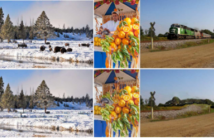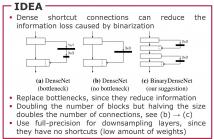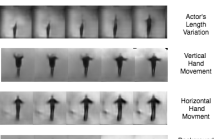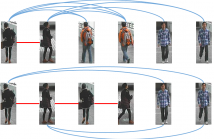
- Read more about ManGAN: Assisting Colorization of Manga Characters Concept Art using Conditional GAN
- Log in to post comments
Colorization is a challenging task that has recently been tackled by deep learning. Line art colorization is particularly difficult because there is no grayscale value to indicate the color intensities as there is in black-and-white photograph images. When designing a character, concept artists often need to try different color schemes, however, colorization is a time-consuming task. In this article, we propose a semi-automatic framework for colorizing manga concept arts by letting concept artists try different color schemes and obtain colorized results in fashion time.
- Categories:
 130 Views
130 Views
- Read more about Context-Aware Automatic Occlusion Removal
- Log in to post comments
Occlusion removal is an interesting application of image enhancement, for which, existing work suggests manually-
- Categories:
 39 Views
39 Views
Binary neural networks are a promising approach to execute convolutional neural networks on devices with low computational power. Previous work on this subject often quantizes pretrained full-precision models and uses complex training strategies. In our work, we focus on increasing the performance of binary neural networks by training from scratch with a simple training strategy. In our experiments we show that we are able to achieve state-of-the-art results on standard benchmark datasets.
poster.pdf
- Categories:
 61 Views
61 Views
- Read more about LEARNING TEMPORAL INFORMATION FROM SPATIAL INFORMATION USING CAPSNETS FOR HUMAN ACTION RECOGNITION
- Log in to post comments
Capsule Networks (CapsNets) are recently introduced to overcome some of the shortcomings of traditional Convolutional Neural Networks (CNNs). CapsNets replace neurons in CNNs with vectors to retain spatial relationships among the features. In this paper, we propose a CapsNet architecture that employs individual video frames for human action recognition without explicitly extracting motion information. We also propose weight pooling to reduce the computational complexity and improve the classification accuracy by appropriately removing some of the extracted features.
- Categories:
 39 Views
39 Views
- Categories:
 8 Views
8 Views
- Read more about A-CCNN: Adaptive CCNN for Density Estimation and Crowd Counting
- Log in to post comments
Crowd counting, for estimating the number of people in a crowd using vision-based computer techniques, has attracted much interest in the research community. Although many attempts have been reported, real-world problems, such as huge variation in subjects’ sizes in images and serious occlusion among people, make it still a challenging problem. In this paper, we propose an Adaptive Counting Convolutional Neural Network (A-CCNN) and consider the scale variation of objects in a frame adaptively so as to improve the accuracy of counting.
ICIP2018.pptx
- Categories:
 17 Views
17 Views
- Read more about Deep Feature Embedding Learning for Person Re-Identification Using Lifted Structured Loss
- Log in to post comments
In this paper, we propose deep feature embedding learning for person re-identification (re-id) using lifted structured loss. Although triplet loss has been commonly used in deep neural networks for person re-id, the triplet loss-based framework is not effective in fully using the batch information. Thus, it needs to choose hard negative samples manually that is very time-consuming. To address this problem, we adopt lifted structured loss for deep neural networks that makes the network learn better feature embedding by minimizing intra-class variation and maximizing inter-class variation.
- Categories:
 77 Views
77 Views